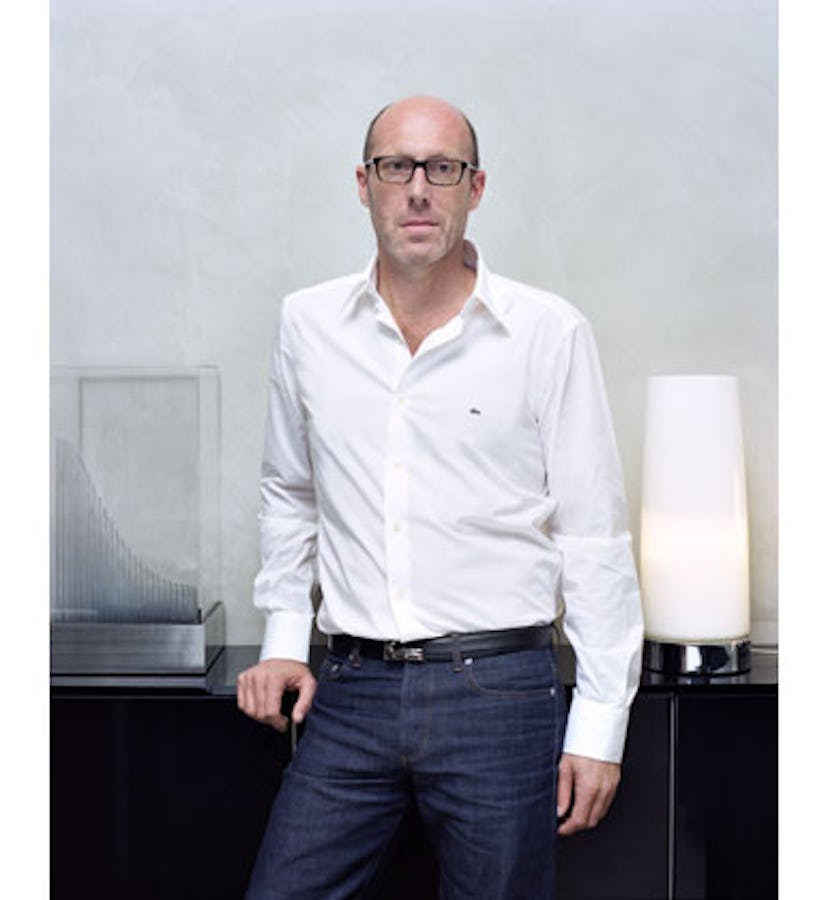Father of Invention
Ever since René Lacoste designed his first cotton mesh shirt in 1927, going on to manufacture it in 1933, the brand Lacoste has become synonymous with the image of a L12.12 polo shirt emblazoned...

Ever since René Lacoste designed his first cotton mesh shirt in 1927, going on to manufacture it in 1933, the brand Lacoste has become synonymous with the image of a L12.12 polo shirt emblazoned with a stitched crocodile logo. And while tradition and recognition are invaluable ingredients to any successful company, a little whimsy and imagination never hurt.
Entrée Christophe Pillet, the design director of Lacoste since 2009. A self-described “countryside boy” from the small city of Montargis, France, Pillet has brought a blend of innovation to the established label. Key to this has been his establishment of the Lacoste Lab, a kind of mad science creative team who dream up cool products and collaborations.
“Invention has always been a pillar of Lacoste. Mr. René Lacoste, besides being an excellent champion of tennis, was an engineer all his life,” explains Pillet. “The Lacoste Lab is a sort of experimentation classroom or a practice area, where designers can clearly define what Lacoste should be in the future. We are very free, there’s no rules, we don’t care about cost: it’s just about bringing back the idea of invention.”
Thus far, Pillet’s endeavors have resulted in an array of sports products like golf and tennis balls, a cricket paddle and ball and a wetsuit (all bearing that green croc). A selection of these items, including skis, a bicycle and a surfboard, will be sold in a limited edition in Paris at Colette this coming January, during the shows there.
The Lab’s projects have also pushed Pillet in more engineering directions. While working on the design of the bottles for Lacoste’s new L.12.12 men’s fragrances, on sale nationwide next month, Pillet encountered obstacles in a deceptively simple task: affixing a fabric crocodile to the clean glass bottles.
“There are laws and regulations… you can’t scratch the branding,” he says. The solution? “We developed a very specific glue to stick fabric on the glass and have it hold for a very, very long time.”
Perhaps one of Pillet’s most exciting technological feats is yet to come: he has been laboring over a new tennis racquet design that melds the wood of traditional racquets with the graphite of the contemporary incarnations.
“Graphite is extremely powerful, sharp in terms of playing, but it’s very hard. The quality of the wood is a comfort in playing, in precision,” he explains. “So with this composite, we achieved the energy of the graphite with the comfort and control of the wood.”
Such out of the box thinking is par for the course for Pillet. As a teenager, he played the piano and wanted to be a musician. But his parents, tired of hearing him jamming with his friends at night, suggested art school, where he discovered design.
“So I started very casually,” says Pillet.
He studied at Arts Decoratifs in Nice and Domus Academy in Milan. In addition to his Lacoste position, he also has his own design agency, Agence CCCP, where he works on everything from furniture to hotels and fashion boutiques.
And typical of any creative type, he is wont to pinpoint a prototype over the years of which he is most proud.
“The favorite thing I’ve developed? I don’t know,” he muses. “I have the feeling it’s never achieved, so I say the next product will be the best product.”